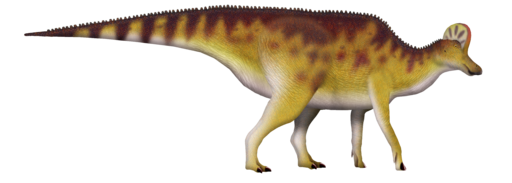The Crested Duck-Billed Dinosaur
Corythosaurus was a fascinating herbivorous dinosaur that lived during the Late Cretaceous period, approximately 77 to 75 million years ago. It belonged to a group known as hadrosaurids, or duck-billed dinosaurs, due to their flat, duck-like snouts.

| Meaning | Helmet lizard [Corytho-saurus] |
| Pronunciation | kor-RITH-oh-sore-us |
| When: | Late Cretaceous (about 77–75 million years ago) |
| Where: | North America (Canada, USA) |
| What: | Hadrosaur (duck-billed herbivorous) |
| Weight: | Estimated around 3–5 metric tons |
| Length: | Approximately 9–10 meters (30–33 feet) |
| Diet: | Herbivorous (ate plants, leaves, and other vegetation) |
| Discovered: | First described by Barnum Brown in 1914 |
One of the most striking features of Corythosaurus was the large, hollow crest on its head, which was shaped like a helmet and used for producing sounds and visual displays.
Corythosaurus measured about 9 meters (30 feet) in length and could weigh up to 4 tons.
It walked on both two and four legs, using its strong hind legs for moving quickly and its front legs for support while feeding.
Corythosaurus had hundreds of tightly-packed teeth suited for chewing tough, fibrous plants, which made up its primary diet.
Fossils of Corythosaurus have been found in North America, particularly in Alberta, Canada. The discovery of skin impressions revealed that Corythosaurus had scaly skin, further enriching our understanding of these remarkable creatures.
